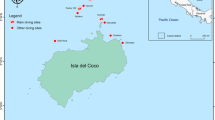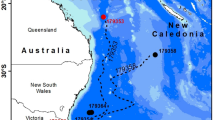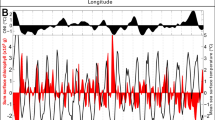Abstract
SINCE the discovery of the Australasian barnacle Elminius modestus Darwin in the south of England in 19451 (with further evidence of a previous settlement in 19432), its rate of spread has been well documented3. It is therefore of interest to record the discovery of a single living specimen at Farland Point, Isle of Cumbrae, Scotland, on March 7, 1955. The nearest record to the present one, 55 miles south at Stranraer, Wigtownshire, was in 19504.
This is a preview of subscription content, access via your institution
Access options
Subscribe to this journal
Receive 51 print issues and online access
$199.00 per year
only $3.90 per issue
Buy this article
- Purchase on SpringerLink
- Instant access to full article PDF
Prices may be subject to local taxes which are calculated during checkout
Similar content being viewed by others
References
Bishop, M. W. H., Nature, 159, 501 (1947).
Stubbings, H. G., Nature, 166, 277 (1950).
Most of the relevant literature is cited in Bishop, M. W. H., Nature, 167, 531 (1951), and Kühl, H., Helgöland. Wiss. Meeresunters, 5, 53 (1954).
Crisp, D. J., and A. H. N. Molesworth, Nature, 167, 489 (1951).
Author information
Authors and Affiliations
Rights and permissions
About this article
Cite this article
CONNELL, J. Elminius modestus Darwin, a Northward Extension of Range. Nature 175, 954 (1955). https://doi.org/10.1038/175954a0
Issue date:
DOI: https://doi.org/10.1038/175954a0
This article is cited by
-
Effects of temperature and salinity on larval development ofElminius modestus (Crustacea, Cirripedia) from Helgoland (North Sea) and New Zealand
Helgoländer Meeresuntersuchungen (1986)
-
Northern Limits of Elminius modestus in Britain
Nature (1960)
-
Elminius modestus Darwin on the Isle of Cumbrae (Firth of Clyde)
Nature (1960)



